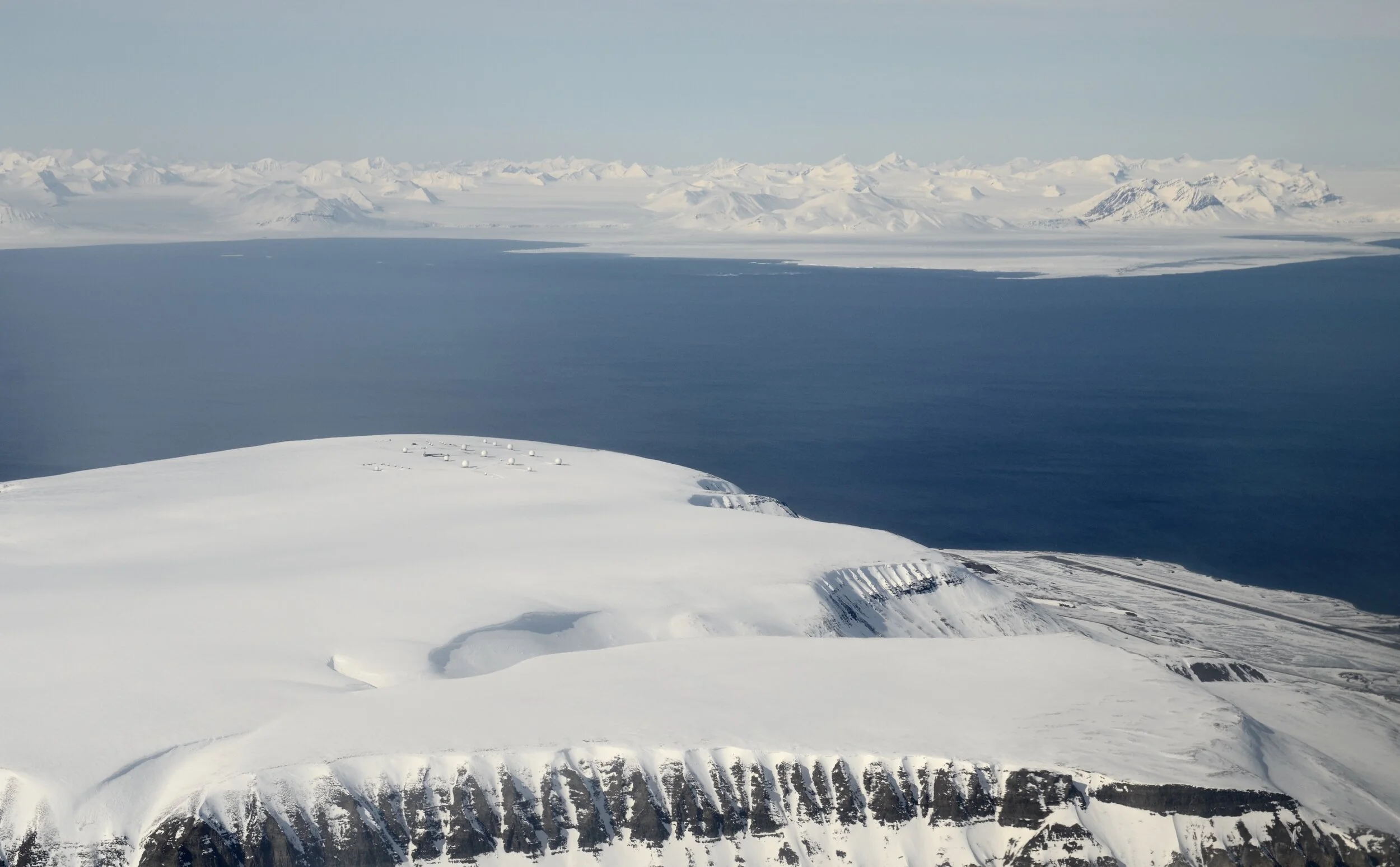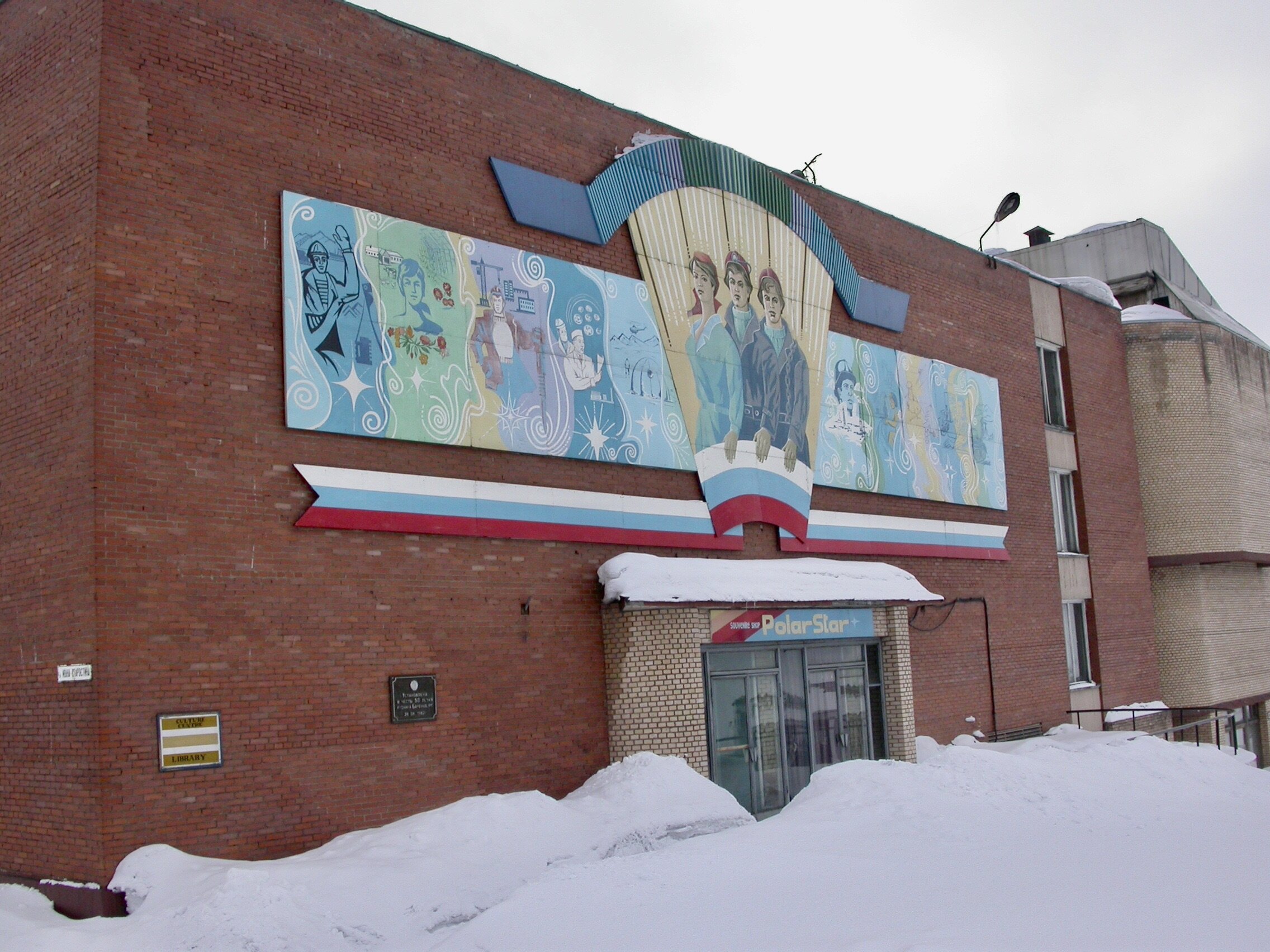Svalbard
Svalbard is a Norwegian archipelago in the Arctic Ocean. Situated north of mainland Europe, it is about midway between continental Norway and the North Pole. The islands of the group range from 74° to 81° north latitude, and from 10° to 35° east longitude. The largest island is Spitsbergen, followed by Nordaustlandet and Edgeøya.
Photo: Teodor Bjerrang
All photos by Teodor Bjerrang
Teodor Bjerrang - 1st april 1999
University Centre in Svalbard
In the photo you can see The University Centre in Svalbard (UNIS) is the world’s northernmost higher education institution, located in Longyearbyen at 78º N. We provide research-based education of the next generation of Arctic experts in biology, geology, geophysics and technology.
To the right you can spot the restaurant “Huset” Photo: Teodor Bjerrang
Svalbard Airport, Longyear
This is the northernmost airport in the world with scheduled public flights.
Svalbard Global Seed Vault. Photo: Teodor Bjerrang
Svalbard Global Seed Vault
Conservationist Cary Fowler, in association with the Consultative Group on International Agricultural Research (CGIAR), started the vault to preserve a wide variety of plant seeds that are duplicate samples, or "spare" copies, of seeds held in gene banks worldwide. The seed vault is an attempt to ensure against the loss of seeds in other genebanks during large-scale regional or global crises. The seed vault is managed under terms spelled out in a tripartite agreement between the Norwegian government, the Crop Trust and the Nordic Genetic Resource Center (NordGen).
Photo: Teodor Bjerrang
Svalbard Satellite Station
Svalbard Satellite Station or SvalSat is a satellite ground station located on Platåberget near Longyearbyen in Svalbard, Norway. Opened in 1997, it is operated by Kongsberg Satellite Services (KSAT), a joint venture between Kongsberg Defence & Aerospace and the Norwegian Space Centre (NSC). SvalSat and KSAT's Troll Satellite Station (TrollSat) in Antarctica are the only ground stations that can see a low altitude polar orbiting satellite (e.g., in sun-synchronous orbit) on every revolution as the earth rotates. The facility consists of 31 multi-mission and customer-dedicated antennas which operate in the C, L, S and X bands. The station provides ground services to more satellites than any other facility in the world.
Svalbard Satellite Station - Photo: Teodor Bjerrang
Photo: Teodor Bjerrang
Fiber all the way from my home island Andøya
The Svalbard Undersea Cable System is a twin submarine communications cable which connects Svalbard to the mainland of Norway. The two optical fiber cable consist of two segments, from Harstad to Breivika in Andøy, and from Breivika to Hotellneset near Longyearbyen in Svalbard. The system is now the sole telecommunications link to the archipelago.
Planning of the cables started in 2002 by the Norwegian Space Centre (NSC), who wanted increased bandwidth to expand their business at Svalbard Satellite Station (SvalSat). At the time all telecommunications from Svalbard were relayed via communications satellite. Financing was secured through a deal with the National Aeronautics and Space Administration (NASA). The cable system was supplied by Tyco Communications and laying of the cable was carried out by Global Marine Systems in July and August 2003.
Photo: Teodor Bjerrang
Barentsburg
Barentsburg (Russian: Баренцбург) is the second-largest settlement on Svalbard, with about 470 inhabitants (2015).
Although Svalbard is under Norwegian sovereignty, the unique Svalbard Treaty of 1920 allows citizens of signatory countries equal rights to exploit natural resources. Russia, along with Norway (via the Sveagruva mine and Mine 7), maintains mining operations on Svalbard as a result. Russia maintains a consulate in Barentsburg, the northernmost diplomatic mission of any kind in the world. Barentsburg still has a Norwegian mail address and Norwegian phone numbers.
The distance from Longyearbyen to Barentsburg is about 55 km but there are no roads connecting the two settlements. Most contact between the two is by boat, snowmobile, or helicopter. There is a heliport (ICAO code ENBA) with a road connection at Heerodden (78.100809°N 14.196224°E), 4 km north of Barentsburg. Tourists usually arrive via a 2-3-hour boat trip from Longyearbyen. The coal is freighted by ship. The port is located in the middle of Barentsburg. (Wikipedia)
From Barentsburg. Photo: Teodor Bjerrang
Svalbard reindeer
(Wikipedia) They remain short-legged and have a relatively small, rounded head. Their fur is also lighter in colour and thicker during winter. The thickness of the coat contributes to the short-legged appearance and makes even starved animals appear fat in the winter. The males develop large antlers during the period from April to July and shed the velvet during August–September. Males lose their antlers in early winter. Females develop antlers starting in June and they are usually retained for a whole year.
Some 200 reindeer were found starved to death in July 2019, apparently due to low precipitation related to climate change.
Svalbard reindeer. Photo: Teodor Bjerrang
Arctic World Archive
Check out arcticworldarchive.org
(Wikipedia) The Arctic World Archive is a facility for data preservation in Svalbard, Norway, operated by the Norwegian companies Piql and the state-owned Store Norske Spitsbergen Kulkompani.It was opened on March 27, 2017.
The facility is located approximately 150 metres (490 ft) below ground inside an abandoned coal mine in a mountain on the island of Spitsbergen. Because of the island's Arctic climate and resulting permafrost, even if the power to the facility failed, the temperature inside the vault will remain below freezing—enough to preserve the vault's contents for decades or more.Data is stored offline on digital film that has a reported lifetime of 500 years.
The Svalbard archipelago is declared demilitarized by 42 nations and the company describes the location as "one of the most geopolitically secure places in the world". The vault is situated deep enough that it can avoid damage from nuclear and EMP weapons.
The archive stores data such as a digitized version of The Scream by Edvard Munch for the National Museum of Norway and a digitised version of The Divine Comedy for the Vatican Library. In November 2019, GitHub announced that all of its public open source code would be archived at the Arctic World Archive.



































































